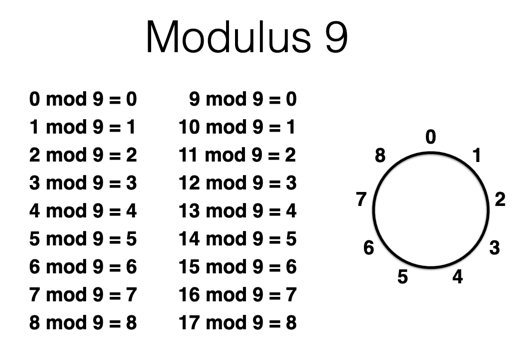
We went through few examples that should help you use the Python modulo operator in your programs. Math fmod Python Function used with negative floats > math.fmod(-5.2, 2.2) It is used to calculate checksums for international standard book numbers (ISBNs) and bank identifiers (Iban numbers) and to spot errors in them. But it also has many practical applications. Modulo Operator used with negative floats > -5.2 % 2.2 Modular arithmetic is used extensively in pure mathematics, where it is a cornerstone of number theory.

Let’s see the results we get using math.fmod(): > math.fmod(-5, 2)Īnd here is the difference when we calculate the modulo with negative floats… You cannot divide a number by zero Using the Math.fmod FunctionĪn alternative to the % modulo operator that is preferred when working with floats, is the fmod() function of the Python math module.īelow you can see the description of math.fmod() from the Python official documentation.īefore we have tested the % operator with negative integers: > -5 % 2 … print("You cannot divide a number by zero") We can handle the exception using a try-except statement. In both cases, the Python interpreter raises a ZeroDivisionError exception. ZeroDivisionError: integer division or modulo by zero Here is what happens when the divisor of an expression using the modulo operator is zero.

Notice that to print the value of x as part of the print statement we have used the string format() method.

8 modulo 3 is 2 because 8 divided by 3 is 2 with a remainder of 2.5 modulo 2 is 1 because 5 divided by 2 is 2 with a remainder of 1.
HOW DO YOU DO DIVISION IN MODULAR ARITHMETIC HOW TO
Here are some examples of how to use it: > 5 % 2 To represent the modulo operator we use the symbol % between the two operands. One of the arithmetic operators available in Python is the Modulo Operator that returns the remainder of the division between two numbers. Let’s go through some examples to explain the meaning of modulo in Python.

Here is an example of how to use it: 5 % 2 is equal to 1 (the remainder of the division between 5 and 2). The Modulo operator is part of Python arithmetic operators. The Python Modulo operator returns the remainder of the division between two numbers and it is represented using the % symbol. Thanks for your help this has a difficult post for me, it was my first, ever.While working with numbers you might have found the need to use the Python Modulo operator in your program. java, C, C++, C#, VB,īut after 6 years of studying CS i have decided to major in mathematics so i can go on to teach at the community college level. I am a computer science graduate at the community college level i have a diploma, i was rather intrigued with assembly language it was my favorite out of all the languages i studied e.g. Whether you use two's compliment or modular arithmetic to do these equations does not matter, you are likely to get the same answer, thanks I needed a little clarification about binary representation of signed numbers and mathematical operations on these binary numbers, you have helped me tremendously, thanks.Īs for my study of the registers and the mathematical operations and them, maybe this is a computer organization or hardware question like you stated. We have studied the registers as rings (ring theory) and how to use modular arithmetic (not two's compliment) to understand how the registers are used in mathematical operations and how numbers are represented in these registers. Well i am a college student, i am enrolled in computer organization and advanced assembly language programming.


 0 kommentar(er)
0 kommentar(er)
